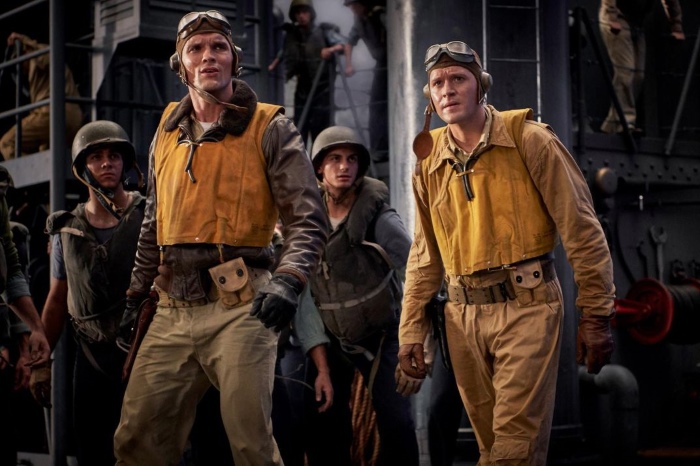The new film “Midway” revisits the pivotal WWII battle from the perspectives of pilots, codebreakers and naval officers on both sides of the conflict.

At the present time we have only enough water for two weeks. Please supply us immediately,” read the message sent by American sailors stationed at Midway, a tiny atoll located roughly halfway between North America and Asia, on May 20, 1942.
The plea for help, however, was a giant ruse; the base was not, in fact, low on supplies. When Tokyo Naval Intelligence intercepted the dispatch and relayed the news onward, reporting that the “AF” air unit was in dire need of fresh water, their American counterparts finally confirmed what they had long suspected: Midway and “AF,” cited by the Japanese as the target of a major upcoming military operation, were one and the same.
This codebreaking operation afforded the United States a crucial advantage at what would be the Battle of Midway, a multi-day naval and aerial engagement fought between June 3 and 7, 1942. Widely considered a turning point in World War II’s Pacific theater, Midway found the Imperial Japanese Navy’s offensive capabilities routed after six months of success against the Americans. As Frank Blazich, lead curator of military history at the Smithsonian’s National Museum of American History, explains, the battle leveled the playing field, giving U.S. forces “breathing room and time to go on the offensive” in campaigns such as Guadalcanal.
Midway, a new movie from director Roland Emmerich, known best for disaster spectacles like The Day After Tomorrow, traces the trajectory of the early Pacific campaign from the December 7, 1941, bombing of Pearl Harbor to the Halsey-Doolittle Raid in April 1942, the Battle of the Coral Sea in May of that same year, and, finally, Midway itself.
Traditional military lore suggests a Japanese victory at Midway would have left the U.S. West Coast vulnerable to invasion, freeing the imperial fleet to strike at will. The movie’s trailer outlines this concern in apt, albeit highly dramatic, terms. Shots of Japanese pilots and their would-be American victims flash across the screen as a voiceover declares, “If we lose, then [the] Japanese own the West Coast. Seattle, San Francisco, Los Angeles will burn.”
The alternative to this outcome, says Admiral Chester Nimitz, played by Woody Harrelson in the film, is simple: “We need to throw a punch so they know what it feels like to be hit.”
***
According to the National WWII Museum, Japan targeted Midway in hopes of destroying the U.S. Pacific Fleet and using the atoll as a base for future military operations in the region. (Formally annexed in 1867, Midway had long been a strategic asset for the United States, and in 1940, it became a naval air base.) Although the attack on Pearl Harbor had crippled the U.S. Navy, destroying three battleships, 18 assorted vessels and 118 aircraft, the Doolittle Raid—a bombing raid on the Japanese mainland—and the Battle of the Coral Sea—a four-day naval and aerial skirmish that left the Imperial Navy’s fleet weakened ahead of the upcoming clash at Midway—showed Japan the American carrier force was, in Blazich’s words, “still a potent threat.”
Cryptanalysts and linguists led by Commander Joseph Rochefort (played by Brennan Brown in the film) broke the Japanese Navy’s main operational code in March 1942, enabling the American intelligence unit—nicknamed Station Hypo—to track the enemy’s plans for an invasion of the still-unidentified “AF.” Rochefort was convinced “AF” stood for Midway, but his superiors in Washington disagreed. To prove his suspicions, Rochefort devised the “low supplies” ruse, confirming “AF”’s identity and spurring the Navy to take decisive counter-action.
Per the Naval History and Heritage Command, Admiral Isoroku Yamamoto (Etsushi Toyokawa), commander of Japan’s imperial fleet, grounded his strategy in the assumption that an attack on Midway would force the U.S. to send reinforcements from Pearl Harbor, leaving the American fleet vulnerable to a joint strike by Japanese carrier and battleship forces lying in wait.
“If successful, the plan would effectively eliminate the Pacific Fleet for at least a year,” the NHHC notes, “and provide a forward outpost from which ample warning of any future threat by the United States would come.”